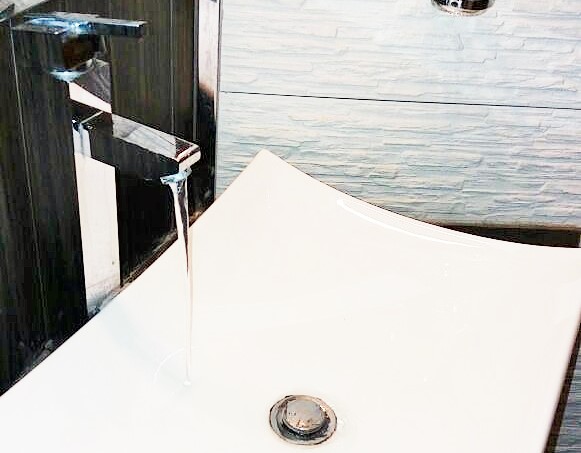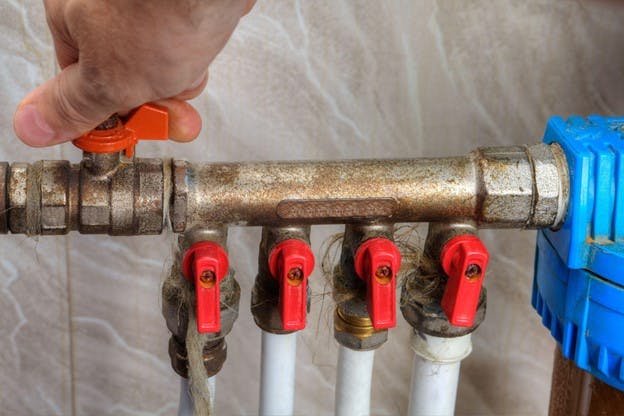Useful Tactics for Overcoming Low Water Pressure in Your Home
Useful Tactics for Overcoming Low Water Pressure in Your Home
Blog Article
The publisher is making a few great points about 9 Reasons for Low Water Pressure in Your House as a whole in the article beneath.

Low water stress in your house can be a frustrating trouble, affecting every little thing from showering to cleaning recipes. If you're experiencing weak water flow, there are numerous possible causes and services to discover. In this guide, we'll go over common reasons for low tide pressure and functional steps to resolve the issue successfully.
Introduction to Low Water Stress
Low tide pressure happens when the flow of water from your faucets, showers, and other fixtures is weak than common. This can make daily tasks extra difficult and less reliable. Comprehending the sources of low tide stress is crucial to finding the right remedy.
Usual Sources Of Low Tide Pressure
Faulty Stress Regulators
Stress regulators are in charge of keeping constant water stress in your house. If they malfunction, it can cause low tide stress or unequal circulation throughout your home.
Metropolitan Water System Issues
In some cases, the issue exists outside your home. Local water issues, such as main line leaks or maintenance work, can temporarily decrease water pressure in your area.
Pipe Obstructions
In time, pipes can become clogged with mineral deposits, debris, or debris, restricting the flow of water. This is a common issue in older homes with galvanized steel pipes.
Deterioration
Deterioration within pipelines can bring about leaks and reduced water stress. Corrosion accumulation can restrict water flow, especially in maturing plumbing systems.
Just How to Diagnose Low Tide Stress
Checking Pipes
Inspect noticeable pipelines for indications of leaks, corrosion, or obstructions. Focus on any type of unusual audios, such as knocking or rattling pipes, which could show problems within the plumbing system.
Consulting with a Plumber
If you're unable to identify the cause of low tide pressure, consider working with an expert plumber to carry out a comprehensive inspection. They can recognize underlying concerns and advise ideal options.
Inspecting Taps and Fixtures
Begin by examining the water stress at different taps and components throughout your home. If the concern is isolated to particular locations, it may suggest localized problems.
DIY Solutions to Deal With Low Water Stress
Flushing Water Heater
Debris accumulation in the water heater can restrict flow and decrease effectiveness. Purging the container regularly aids get rid of sediment and keep optimum performance.
Examining Pressure Regulatory Authority
Guarantee that the pressure regulator is operating correctly. Adjusting or replacing the regulator can help bring back appropriate water stress throughout your home.
Cleansing Aerators and Showerheads
Mineral deposits can collect in aerators and showerheads, reducing water circulation. Remove and clean these parts frequently to improve water stress.
Cleaning Clogs in Pipes
For small clogs, try making use of a plumbing snake or chemical drainpipe cleaner to clear obstructions in pipelines. Be cautious when making use of chemicals and follow safety and security guidelines.
When to Call a Specialist Plumber
If DIY efforts fall short to resolve the issue or if you presume significant plumbing issues, it's ideal to seek assistance from an accredited plumber. They have the knowledge and devices to attend to complex problems securely and effectively.
Preventive Measures to Keep Water Stress
Installing a Pressure Booster
Think about mounting a pressure booster pump to improve water stress in locations with continually low flow. This can be particularly useful for multi-story homes or properties with high-demand fixtures.
Tracking Water Use
Bear in mind water use behaviors and prevent ill-using the plumbing system. Easy modifications, such as incredible showers and washing lots, can help preserve sufficient water pressure.
Routine Upkeep
Arrange routine maintenance for your plumbing system to avoid problems such as rust, leaks, and obstructions. Resolving small issues early can assist prevent more substantial fixings later.
Verdict
Taking care of low water pressure can be discouraging, yet determining the underlying causes and carrying out proper options can bring back ideal flow throughout your home. Whether it's cleansing aerators, checking pipelines, or seeking advice from a plumber, taking positive steps can ensure a steady supply of water for your day-to-day needs.
FOUR WAYS TO FIX LOW WATER PRESSURE NOW
Turning on a shower or faucet only to find the water comes out in a sad, slow drizzle is never a good feeling. How exactly are you supposed to wash a pan or take a quick shower when it takes 10 minutes just to rinse off a little soap? The good news is that when your water pressure is bad, there's always a cause: typically one that can be easily fixed. Here are some of the most common causes of low pressure and what you can do to fix the issue:
DEBRIS AND MINERAL DEPOSIT BUILDUPS
If you notice low water pressure from just one or two of the fixtures in your house, the problem likely has to do with debris buildup. Water is full of minerals and other debris, all of which can accumulate in your pipes and on your fixtures. This can cause a blockage that affects how much water flows through. To fix this, try filling a small plastic bag with white vinegar, and use a rubber band to hang it around your showerhead or faucet. Let the head of the fixture soak for a few hours, and the vinegar should loosen the deposits.
WATER LEAKS
Leaks are another common cause of low water pressure. If water is flowing out of your plumbing through a hole or crack before it can reach your fixture, the pressure coming out of the faucet or showerhead will be lower. A plumbing professional is your best bet for finding and repairing a leak in your water supply pipes.
Leaks are another common cause of low water pressure. If water is flowing out of your plumbing through a hole or crack before it can reach your fixture, the pressure coming out of the faucet or showerhead will be lower. A plumbing professional is your best bet for finding and repairing a leak in your water supply pipes.
A VALVE ISSUE
If you have low water pressure throughout your home, check your main shut-off valve to make sure it's completely open. You may also want to see if there's a pressure-reducing valve installed. If there is, have a plumber help you adjust the settings to get the pressure you're looking for.
OTHERS USING WATER
Believe it or not, your low water pressure could be caused by your neighbors. If you notice low pressure at certain times of day, it may be because you and the people living next to you have similar schedules - when everyone is showering at the same time, the pressure will be lower in every home. Low pressure throughout the neighborhood may also be caused by an issue with your municipal water supply. If that's the case, call the supplier to see if they're working on the issue.
https://www.rotorooter.com/blog/water-leaking/low-water-pressure-fixes/

We had been introduced to that article about from a friend on a different web address. Are you aware of another individual who is fascinated about the topic? Feel free to share it. I truly appreciate reading our article about Dealing with Low Water Pressure in Your Home.
Call Report this page